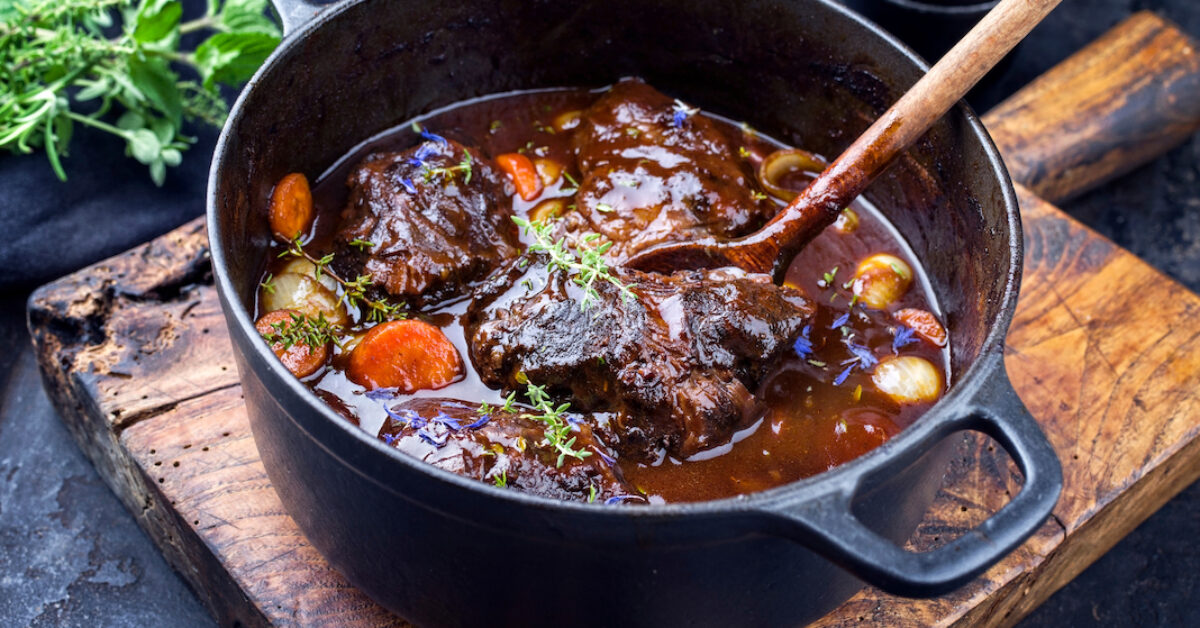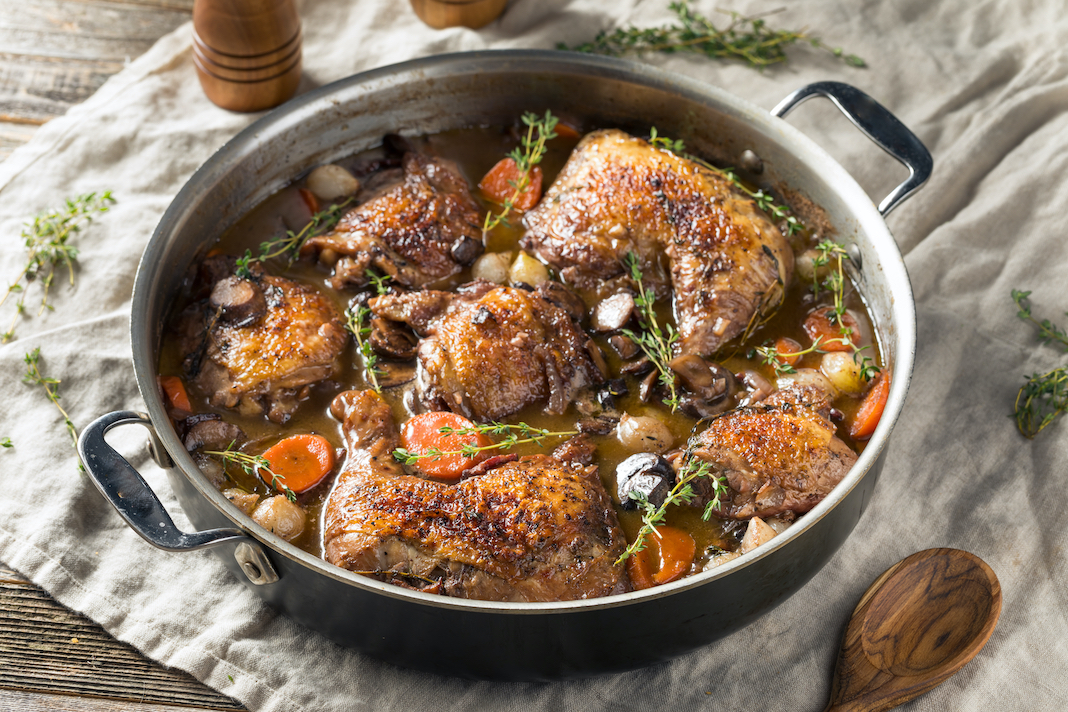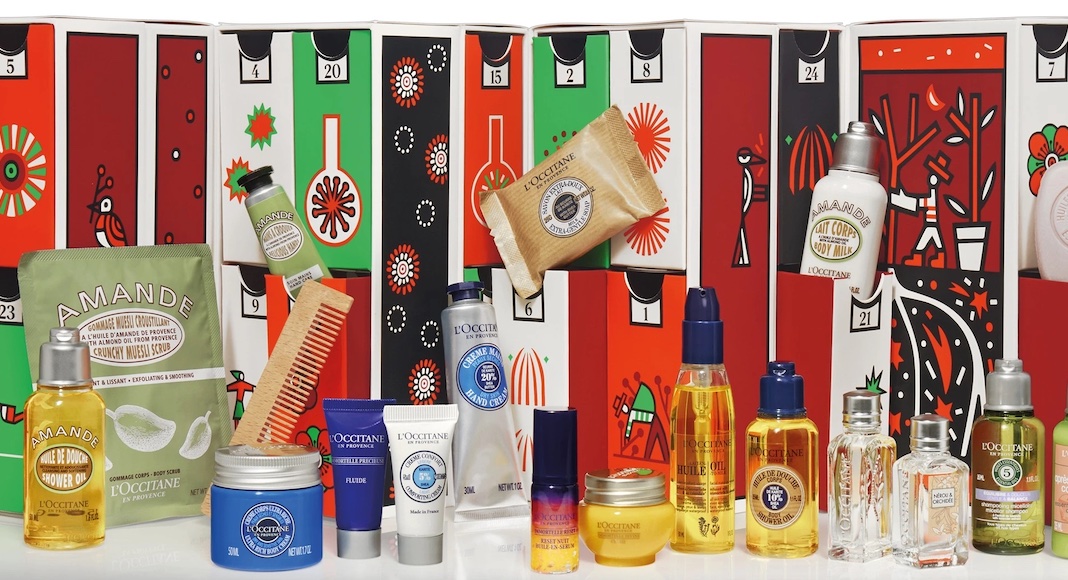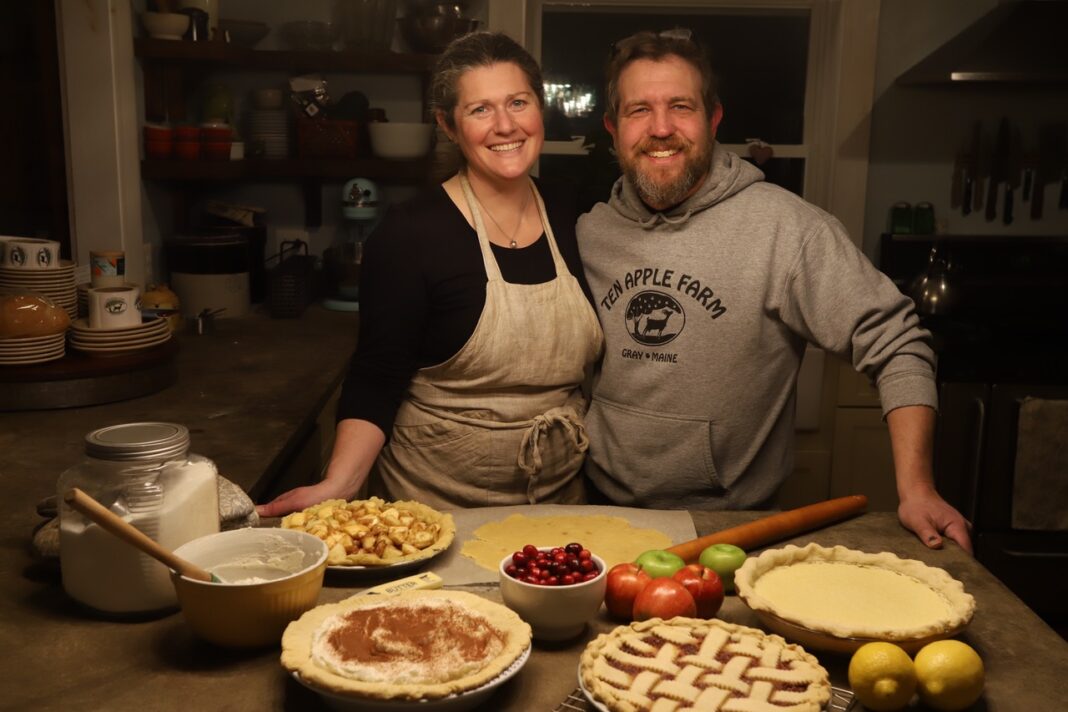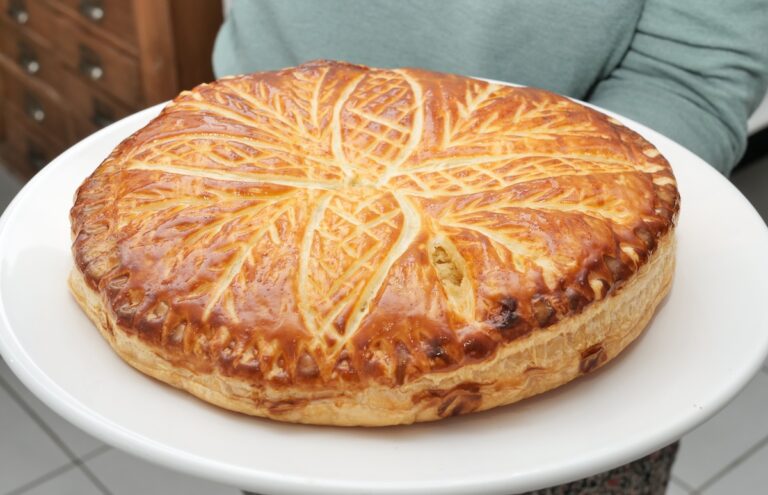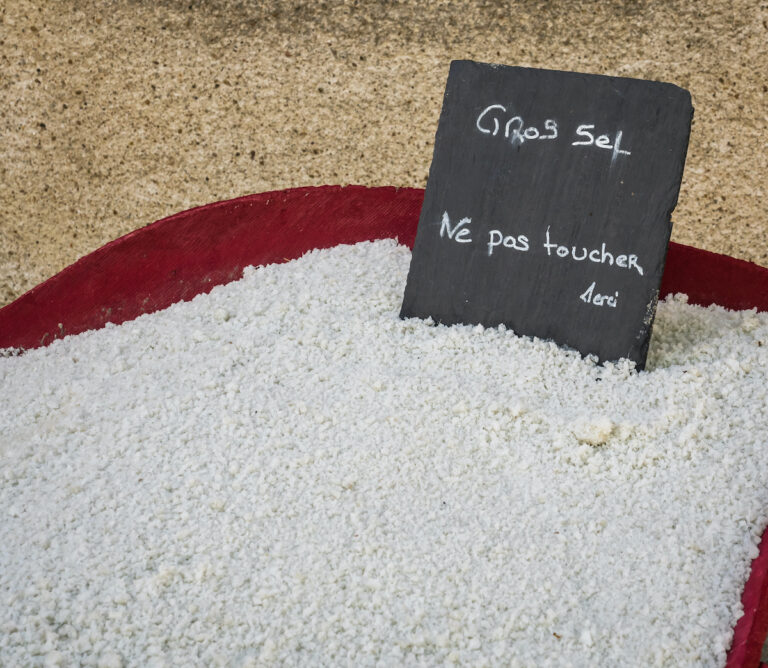November 24, 2023
Dear Frenchly Readers,
If you are at all like anyone in my family, you will wake up on the day after Thanksgiving, still full from the night before, and possibly dyspeptic, have a cup of coffee, a slice of coconut pumpkin pie, and start talking about what you are going to cook the next holiday.
My aunt Sally used to joke that the only safe conversation for everyone at the dinner table, when we’d all gather at my grandparents’ cottage out on Nantucket Island, was “what are we going to eat tomorrow?” This wasn’t just gluttony. It was just as much self-preservation. And it was, and still is, really, this idea that food unites and softens, even in the midst of familial dysfunction. Food is love, a gift prepared because you want to make someone else happy. For me, I love to make my sons and husband happy with food. I love to busily create in the kitchen and then see a look of joy (or maybe it’s relief) cross all their faces. It’s best when my husband intones Bob Cratchit and says, “A triumph, my dear. A triumph.”
It was, indeed, the French anthropologist, Claude Levi-Strauss who said that “Cooking transforms food from nature into culture.” I might add that cooking also transforms lofty culture into earthly love.
So, this morning, as my husband and I had the rare treat of being awake while my mother and sons still slumbered off the turkey tryptophan, we started to talk about Christmas dinner. We landed on Boeuf Bourguignon because it is the perfect make-ahead dinner. Indeed, in the best of worlds, it will cook for 2 days and then rest for one full day. Which means, you can make this on the 22nd of December (or 3 days before whatever big holiday/family meal you anticipate, be it New Year’s, the first night of Chanukah or Kwanzaa) and have your dinner already waiting in the fridge. Just add a salad, baguette and voila!
When the French started cooking beef (or chicken, as Coq au Vin is the fowl-sibling of Boeuf Bourguignon) in wine is not easily known. Some people have tried to go all the way back to Cro-Magnon man to follow the ingredient path for when Boeuf Bourguignon might have appeared on French plates, with or without the utensils, right down to the very first bay leaf.
What we do know is that we can go as far back as the Middle Ages and find the French cooking unwanted cuts of meat in wine (it just took a few more years for the tomato and that banned and ugly potato I wrote about last week to make their ways to la France and into the pot).
And here’s what we also know, for sure: Boeuf Bourguignon originated, as the name suggests, in Burgundy, most likely, which is an eastern-central region in France. Many consider Burgundy to be the food and wine capital of la France. (Don’t tell anyone in my one-day-I-hope adoptive French hometown of Lyon.)
The wine, friends, can be any wine. But to stay with the Bourguignon of the entire affair, you might choose a wine made with Pinot Noir or Gamay grapes and the bottle should come from Burgundy, bien sûr. Then, the second reason it’s considered a Burgundian dish is that it uses a special kind of beef from a breed called Charolais that is raised in that region of la France. They are white cattle, known for their tender meat, and though this may rather undercut that tender part and make you not so interested in using anything other than tofu in your Bourguignon, they are also known for their gentle, TENDER, temperament. (There are some great recipes for goat cheese tartes, instead, just below.)
In 1903, it was the famed-French father of Gastronomy, “The King of Chefs,” Auguste Escoffier, who published the official method for Boeuf Bourguignon. Almost overnight it became a sensation, whipping across the globe as if by Instagram, and appearing on tables in the most expensive restaurants in New York, Chicago, San Francisco. In 1961, Julia Child, in Mastering the Art of French Cooking, called Boeuf Bourguignon “One of the most delicious beef dishes concocted by man,” In a 2017 study, the French overwhelmingly voted for Boeuf Bourguignon as their national dish. If you happen to visit Burgundy in the fall, the region celebrates the dish in bistros and fine dining establishments partout.
If you don’t eat red meat, do not fuss. You may prefer a little rooster’s blood instead. So you can make a Coq au Vin, which is the white meat equivalent to Boeuf Bourguignon, also hailing from Burgundy. My dearest friend, Craig, makes this every Christmas. His mother used to make it for him. He likes the fire part (who wouldn’t?). He wrote about this dish and his late mother for Frenchly, here. Coq au Vin uses roughly the exact same ingredients as Boeuf Bourguignon and then sets them aflame à table. It’s a schoolboy’s wet dream.
Though there are variants all over France, some even using Champagne to cook the old rooster tender, it is generally believed that the dish hails at least as far back as the Gauls: The accompanying story is that, besieged by the Romans, the Gauls sent a symbolic rooster to Julius Caesar, as a gift of submission (well, if it was alive, maybe it was not submission but more like, “we’re very tough and scrappy!”). Julius Caesar sent it back cooked in wine. I’m not sure what all that means, except, maybe, “tough chicken, tough neck, ha, needs wine to tenderize”? For the Gaul’s, the rooster was a symbol of valor: the rooster is rare in the barnyard so it is considered a King’s feast.
Now, Coq au Vin is a recipe (also) that Julia Child made famous in the New World, and many consider it her signature dish. (Though, in 1864, a very similar version appeared in Cookery for English Households.) It’s also a versatile dish. You can really use any old fowl and any wine. Not quite ready to be done with turkey? Or recovering from your cousins dreadful Tofurky? Use turkey legs and thighs. You don’t like red wine? Pas de problème. Use white. Only have Prosecco on hand? Use that. (Here’s what I learned in my time in France: Never, ever, ever, use cheap wine for cooking. The difference is shockingly evident once you make the switch from the old idea that cheap wine is fine for cookery.)
Other than that, the only decision you really have to make is this: Will you thicken your Coq au Vin with a flour-based roux or rooster blood?
À cuisiner, boire, regarder et lire ce weekend:
Many of us need to anesthetize our minds after the trauma of a family holiday with shows like The Great British Baking Show (semi-final tonight) watched while nibbling on CBD gummies.
PSA: If you do dip into The Crown this weekend, it may keep you up at night. The incredible sadness I felt (all over again) about Diana’s death was so keen in the turmoil of grief I feel about the world right now, I did not sleep. So maybe not the thing if you are already raw. I think the only answer is to watch Get Back, again. And again, and again. Maybe we can get back, ourselves, to those (can I actually say this?) halcyon days of 2021.
Others of us will soothe ourselves by doing some Black Friday shopping. We’ve got Frenchly’s gift guide, below. Don’t forget the French Advent calendar, also below. Also, if, like my family, you think Thanksgiving is always better the day after, here’s a list of wines to pair with meal #2, when you can finally relax and everything tastes better, anyway.
While you relax, you might love this story about a message in a bottle that was sent by a kid on Cape Cod in 1997 and just found this week in France. I love it. My younger son took one look and said, “I’m doing that this weekend.” In his mind, his bottle travels against the current, up the Rhône to the confluence with the Saône and is found on the shores of our beloved Lyon.
We have a cease fire in the Middle East right now. And for a moment, dear God, we can all breathe and think about what really matters, and how to make it happen. What can you do to make the world a more beautiful and kinder place? “Nothing” is no longer an answer.
While we figure out the what we can do to help heal a broken world, we can sing the Police song, “Message in a Bottle:”
“A year has passed since I wrote my note
I should have known this right from the start
Only hope can keep me together
Love can mend your life, but love can break your heart
I’ll send an SOS to the world I’ll send an SOS to the world…”
À bientôt,
PS: If you like these Le Weekends, please forward them. Frenchly is growing and improving and we want as many people to know about our writers and interesting subjects as possible!
Did you get forwarded this email? Sign up here on our homepage at the sign-up widget to receive this newsletter every Friday in your inbox. I’ll give you news, films, recipes, books, stories and more every Friday afternoon to help you plan and enjoy your weekend! All for free!
If Le Weekend is going in your junk or spam or promotions box, please add us to your contacts by clicking on the address and hitting “add contact” or by dragging “Le Weekend” into your regular inbox, so you don’t have to hunt for it each week.
If you have missed any of my Le Weekends or are new to this newsletter (or just want to go find a TV show, podcast, singer, movie or recipe I once mentioned) they are all here on Frenchly.us.
Come find us on Twitter, Instagram, or Facebook.
And to advertise with us, contact our great sales team here.

